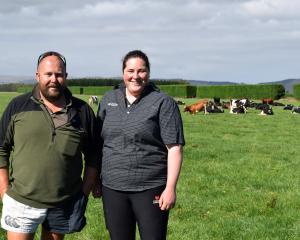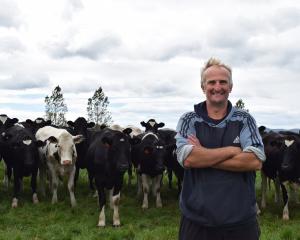
Fonterra’s improved mid-range forecast of $9 a kilogramme of milksolids follows a 50 cents/kg rise for a new range of $8.25/kg-$9.75/kg for this 2024-25 season.
By the numbers, that is only just behind the $9.30/kg result in 2021-22 and $8.40/kg in 2013-14 when farm costs were much lower. But it also comes after Fonterra has just confirmed a $7.83/kg milk payment for the 2023-24 season and a 55c dividend for each share.
Dairy farmers drawing their own conclusions will be factoring in agri-inflation, sharp turnarounds in previous forecasts as well as the latest earnings guidance of 40c-60c for this season.
Federated Farmers South Canterbury Dairy chairman Ad Hendriks said a $9/kg payout sounded impressive, but that was in the future and had to be weighed up with the season just gone.
"The other day I was a little bit annoyed with the [excitement about] a $9/kg payout, rah, rah ... What these people don’t tell you is that the $9/kg is a forecast, but if they really want to set the idea of what’s happening at the moment then they should say a $7.83/kg and 55c dividend. That’s what’s happening now and then explain what might be happening next year — maybe a $9/kg payout and if we’re lucky between 40c-60c dividend. If you are informing Joe Public you can’t mix them up."
There were still a few months to go for a better indication if the mid range forecast was accurate, he said.
"It’s good to see GDT [Global Dairy Trade] go up the last couple of months, but it’s quite interesting to see the news media all going bonkers about $9/kg, and the $9/kg from 10 years ago is not the same as now. Like everybody else, we’ve seen inflation go through the roof and times that by two and you get a bit of a idea what inflation looks like for a dairy farmer."
Farmers operating under a tight regime last year could probably have kept costs down to about $6.20/kg, but that was before paying loan interest or tax, he said.
"Last year was, including the dividend, probably $8.35 and for most people that would’ve been a break-even year or put it this way — no cash coming out the bottom."
Cautious farmers would remember the $8.40/kg payout in 2013-14 arrived when costs were lower at about $5/kg, but was quickly followed by $4.40/kg and $3.90/kg payouts.
"It was a good money spinner at that stage and a neighbouring 25ha block came up for sale and I thought ‘that’s nice’, as we could pay it out of cashflow, and then some signals started to come through before we made a real commitment and we thought it might be better to hold on to that cash. Sure enough, the next two years in a row that was whittled away, so we would’ve bought that block and probably had to sell it again."
Farmers were also worried that businesses providing services would also put their money up, he said.
Fonterra chief executive Miles Hurrell said the lift in the season’s milk price forecast followed further recent strengthening in GDT prices and constrained milk supply in key producing regions.
The increase would be welcomed by farmers, particularly when combined with the 55c total dividend announced for the 2023-24 season, he said.
Fonterra was continuing to maintain a wide range because of the relatively early stage of the season.
The forecast earnings of 40c-60c per share for 2024-25 reflected an expectation the co-op would maintain strong margins in its main sales channels, while also investing in digital upgrades and incurring higher tax expenses.
After several years of strong earnings, the co-op had exhausted tax losses in the 2024 financial year and would now be paying tax, Mr Hurrell said. Mr Hendriks said tighter milk supply internationally was unlikely to change quickly on the back of higher prices.
The United States was capable of increasing production reasonably quickly, but their farmers were producing mainly for the domestic market.
A new right-leaning government was looking more favourably on Netherlands farmers, but they and other European farmers were unlikely to lift production, he said.
"A 1% or 2% lift could quickly happen, but like New Zealand they are under restrictions and under all sorts of consents they have to adhere to, so the same thing is happening overseas and it’s getting harder and harder."
The South Canterbury season had been helped by rain and Lake Opuha was starting to fill again, but overall, rainfall of 640mm was back 150mm to 200mm on normal levels, he said.
"We drove through North Canterbury the other day and caught up with some friends. They had a bit of rain and it looks green but then a neighbour was putting some fence posts in and 20cm down it was just powder."
A few farmers were already irrigating. Fonterra’s forecast hike now places it above processing rival Synlait’s $8.60/kg, the Dunsandel company confirming a final base milk price of $7.83/kg and average 28c/kg incentive for the 2023-24 season.














